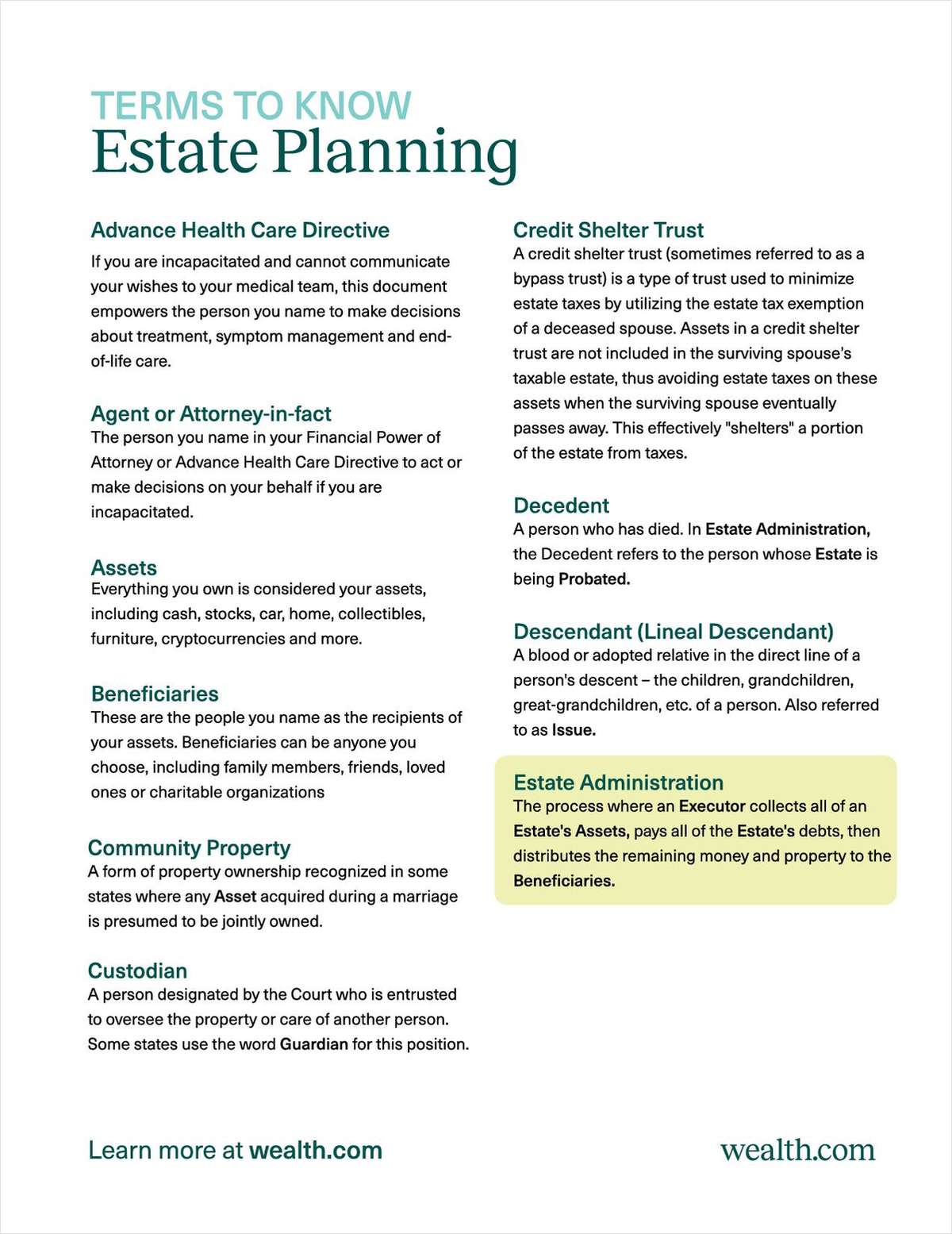By Rajini Kodialam and Rudy Adolf
n life, milestone events–a marriage, the birth of a child, a round-numbered birthday–prompt us to pause and take stock. We may ponder the past or dream of the future. We might be inspired to continue on the path we've laid, or to investigate new alternatives. Whatever action we take, it's frequently accompanied by a thoughtful analysis of what we've accomplished and what we hope to achieve in the years to come.
Business milestones provide much the same opportunity, though it's easy to overlook them in the bustle of day-to-day operations. Consider the following scenario: You set out on your own to become a registered investment advisor (RIA). Years go by–and when you look up, you realize that you're now running a good-sized firm. You might be preoccupied managing operations rather than–or in addition to–working directly with clients. Your firm may have expanded into business areas that no longer fit your mission–or that fit better than your original efforts did. You may have clients who are concerned about your business succession plans. Perhaps without noticing, you have passed several key milestones that define your business, and you're approaching several new ones.
We at Focus Financial Partners have helped many of our partner RIAs plan for and manage these milestones. The key, we've learned, is recognizing that you are entering a new milestone and asking yourself at each stage some crucial questions to take stock of where you are and where you want to go.
Becoming an RIA
Launching an RIA firm isn't something smart entrepreneurs approach lightly–and it's not for everyone. Success in this field requires a unique combination of business skill, financial acuity, comfort with risk and a passion for client service.
Mike Glor and Roger Wade were attorneys working at Ayco in the early 1980s. They loved what they did, but their jobs changed dramatically when it was bought by American Express. (Ayco was bought by Goldman Sachs in 2004.)
In search of a corporate environment that would accommodate their entrepreneurial instincts, Glor and Wade joined another firm. Though they quickly became dissatisfied with the new company, Glor and Wade gained valuable experience in marketing to individual clients. The financial acumen they attained at Ayco, along with their newly acquired marketing expertise, gave them the confidence to strike out on their own. They founded GW & Wade in 1986, and have achieved considerable success: The firm, which offers private wealth advisory services in Wellesley, Massachusetts, and Palo Alto, California, has more than 50 employees and over $2.7 billion in assets under management.
Bob Kresek, on the other hand, took a very different route. Bob had an extremely successful career at Hewlett-Packard. He'd always been interested in the investment advisory business, and his interest was piqued further when he searched for a qualified advisor to give him advice and wound up dissatisfied with his options. Moreover, he had successfully built other businesses before, so he felt comfortable with his abilities as an entrepreneur.
Kresek brought these experiences to bear when he started Founders Financial Network, which provides wealth management services to Silicon Valley executives. Among the keys to Kresek's success were his commitment to seeking education in the field prior to startup, and a close relationship with a successful, established RIA who served as his mentor. He also recognized that he would be making a real commitment to this company, likely the final venture of his professional career, "I knew I was making an investment in a business that would serve clients for years to come, rather than trying to make a quick buck."
Others become RIAs after fruitful careers as brokers. This move may provide the advisor with greater potential profitability, independence and flexibility in serving clients–and, in these tumultuous times, may also reassure existing clients concerned about the security of their assets.
Running the Business
Once you've decided to become an RIA, you face another significant milestone: getting your firm up and running. Shepherding your business through this demanding time–and hiring the staff you need to keep it growing–can be trying.
One of the largest challenges for RIAs–as it is for all entrepreneurs–is the sheer time commitment required to run a young firm. That commitment begins with your due diligence process before you officially launch your advisory firm. While you may be itching to start working with clients, it is essential first to create a detailed business plan and investigate your competition. The plan should define your market opportunity, or the niche you will fill, and it should include financial and staffing projections for the next several years, a marketing plan and the concrete steps you must take in order to launch the business.
When CPA Marty Resnick founded Resnick Investment Advisors in 1990, his market niche was clear: he targeted mass-affluent consumers who need advice-based investment services just as high-net-worth individuals do. His instincts were right on–but he nonetheless spent the first three years working "nonstop" to deal with changing technology systems and ensure that he could produce enough revenue to pay his small staff.
RIAs are likely to face other challenges during their firm's first few years as well. If, unlike Glor and Wade, you don't have experience in marketing to individual clients, you may need to seek out professional marketing advice.
You'll know you've achieved some measure of success when you find that happy clients are referring friends, family members and business colleagues to you but, despite your best efforts, you cannot find a way to absorb additional clients. You might even find yourself contemplating a vacation–which will raise the question of who, exactly, will handle clients' inquiries while you're out of town, manage their portfolios and oversee other aspects of your practice's day-to-day operations.
Strategic decisions such as expanding your staff require a clear understanding of your firm's mission, core clients, and client service model. If your business plan and mission statement have been gathering dust for the last several years, it's time to clean them off. Read them carefully and see what needs to be updated. Think carefully about your overall business strategy, as well as the tactics you use to implement it. If your mission has shifted, determine whether you truly want to follow the mission as it exists on paper. You may be happier with the way the company mission has evolved informally over time–or you may decide to redraft your mission entirely, based on what you have learned during your first years in business. Think about your client service model and, as Moss Adams advocates, you will likely find that you have to evolve beyond a sole proprietorship to a mature ensemble.



